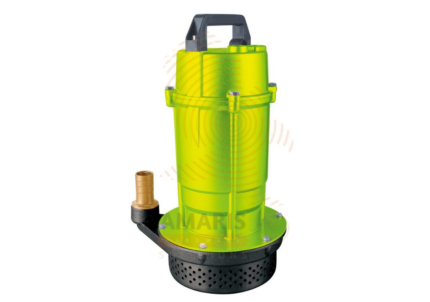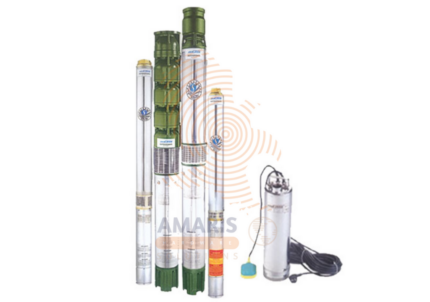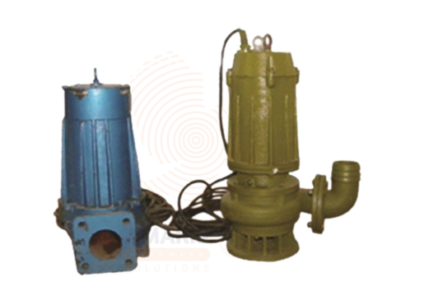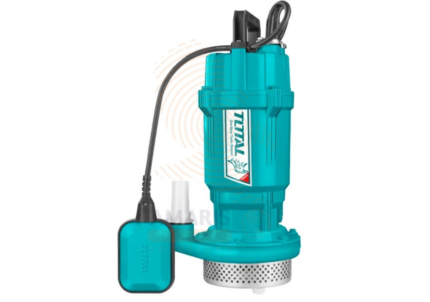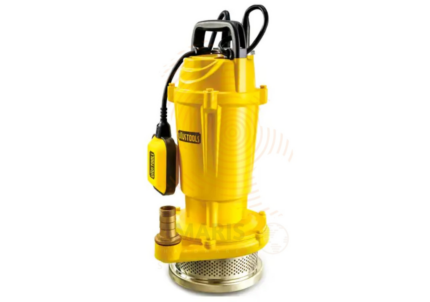
Electric Hammer Drill
$16.63 Original price was: $16.63.$15.80Current price is: $15.80.
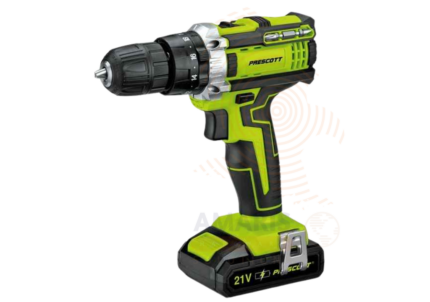
Impact Cordless Drill
$70.38 Original price was: $70.38.$66.86Current price is: $66.86.
Electric Oil Well Pump
$92.31 Original price was: $92.31.$87.69Current price is: $87.69.
WhatsApp Order
An electric oil well pump refers to a type of artificial lift system used in the petroleum industry to extract crude oil from underground reservoirs. This pump is powered by electricity and is typically installed in oil wells to enhance the flow of oil to the surface. The electric oil well pump operates by converting electrical energy into mechanical energy, which is then used to lift the oil from the wellbore to the surface for further processing and transportation. This technology is crucial for maximizing oil production and maintaining the overall efficiency of oil extraction operations.
Description
Table of Contents
ToggleElectric Oil Well Pump
Uses
-
Artificial Lift: Electric oil well pumps are a key component of artificial lift systems. They help overcome the natural decline in reservoir pressure by lifting oil to the surface, ensuring a continuous flow of oil from the wellbore.
-
Increased Production: These pumps are employed to enhance the production rate of oil wells. By efficiently lifting oil from deeper reservoirs or reservoirs with declining pressure, electric pumps contribute to maintaining or increasing overall production levels.
-
Versatility: Electric oil well pumps are versatile and can be used in various well configurations, including vertical and deviated wells. Their adaptability makes them suitable for a wide range of oil extraction scenarios.
-
Deep Well Pumping: In situations where the depth of the oil reservoir is substantial, electric pumps are often preferred for their capability to lift oil from significant depths. This is especially important in offshore drilling and in areas with deep underground oil deposits.
-
Remote Monitoring and Control: Many electric oil well pumps are equipped with monitoring and control systems that allow operators to remotely monitor well conditions and adjust pump parameters. This contributes to operational efficiency and reduces the need for frequent manual intervention.
-
Energy Efficiency: Electric pumps can be more energy-efficient compared to some other artificial lift methods, contributing to cost savings over the long term.
-
Reduced Environmental Impact: Electric pumps may have a lower environmental impact compared to certain alternative pumping methods, such as gas lift or beam pumps powered by gas engines.
-
Consistent Flow Rates: Electric pumps provide a consistent and controllable flow rate, allowing operators to optimize production based on reservoir characteristics and market demands.
-
Ease of Maintenance: Compared to some other artificial lift systems, electric pumps can be relatively easier to maintain, leading to reduced downtime and operational disruptions.
-
Compatibility with Automation: Electric oil well pumps can be integrated into automated control systems, facilitating better coordination with other components of the oil production process and enabling more efficient and streamlined operations.
SAFETY HANDLING PRECAUTIONS
Safety Precautions
-
Wear Personal Protective Equipment (PPE):
-
Eye Protection: Always wear safety glasses or goggles to prevent splashes or debris from entering your eyes.
-
Gloves: Wear chemical-resistant gloves to protect your hands from oil and lubricants.
-
Protective Clothing: Use overalls or aprons to avoid contact with oil or hot surfaces.
-
Read and Understand the User Manual:
-
Familiarize yourself with the manufacturer’s instructions for installation, operation, and maintenance.
-
Inspect the Pump Before Use:
-
Check for any damage, leaks, or loose components. Ensure all connections are secure.
-
Proper Installation:
-
Install the pump on a stable, level surface. Secure all piping and fittings to prevent movement or leaks.
-
Electrical Safety:
-
Ensure the power supply is correctly rated and grounded.
-
Keep water and liquids away from electrical components to prevent shocks.
-
Safe Operation:
-
Never operate the pump unattended.
-
Avoid overloading or running the pump dry, as it may cause overheating or damage.
-
Maintenance Precautions:
-
Disconnect power before performing maintenance or cleaning.
-
Use appropriate tools and follow lockout/tagout procedures if necessary.
-
Ventilation and Environment:
-
Operate the pump in a well-ventilated area to prevent accumulation of fumes.
-
Keep flammable materials away from the pump.
-
Storage:
-
Store the pump in a dry, secure place when not in use.
-
Ensure it is protected from freezing temperatures if applicable.
Related products
Clean Water Submersible Pump
The Clean Water Submersible Pump is designed for efficient water transfer in residential, commercial, and light industrial applications. Engineered to handle clean, debris-free water, this submersible pump ensures reliable performance, high flow rates, and long-lasting durability. Its compact design allows for easy installation in wells, tanks, and sumps, while the corrosion-resistant materials provide enhanced longevity. Ideal for irrigation, water supply, and drainage tasks, this pump combines efficiency with quiet operation, making it a dependable solution for your water handling needs.
Diesel Water Pump
A diesel water pump is a powerful pumping device powered by a diesel engine, widely used in agricultural, industrial, and construction sectors. It efficiently transfers large volumes of water in locations without reliable electricity. Known for its durability, portability, and fuel independence, it’s essential for irrigation, dewatering, firefighting, and water supply tasks in remote or off-grid sites.
Electric Submersible Pump
An electric submersible pump (ESP) is a pump designed to operate while fully submerged in water or other fluids. It uses an electric motor sealed within a watertight casing to push fluid to the surface, making it ideal for draining, irrigation, sewage treatment, and various industrial applications. ESPs are valued for their efficiency, reliability, and ability to handle deep water extraction, providing a steady flow even from significant depths.
Hand Pump
PRODUCT DESCRIPTION
A hand pump is a manually operated device designed to draw or move fluids, typically liquids, from one place to another by using human force. It usually consists of a handle or lever that is manually operated to create suction or pressure, enabling the pumping action to transfer the fluid through a system of valves and pipes. Hand pumps are commonly used for various applications, such as extracting water from wells, transferring liquids between containers, or dispensing fluids in a controlled manner.
Sewage Pump
A sewage pump is a submersible pump designed specifically to move wastewater and solid waste from one location to another, typically from a building’s sewage basin to a septic tank or sewer system. Engineered to handle solids-laden liquids, it is built with corrosion-resistant materials and robust impellers capable of processing human waste, sludge, and debris. Sewage pumps are commonly used in residential, commercial, and industrial sanitation systems, particularly where gravity flow is not possible. They are essential in managing waste efficiently, reducing health risks, and maintaining hygienic conditions.
Sewage submersible pump
A sewage submersible pump is a specialized type of pump designed for the efficient and reliable transfer of wastewater, sewage, or other contaminated fluids from one location to another. Unlike traditional pumps that are installed above ground, sewage submersible pumps are designed to be submerged in the fluid they are pumping. This submersible design allows the pump to operate efficiently in challenging environments, such as sewage systems, septic tanks, or other applications where the fluid may contain solids or debris.
These pumps are typically sealed to prevent water or sewage from entering the motor and other internal components. They often feature robust construction and materials to withstand the corrosive and abrasive nature of sewage. Sewage submersible pumps play a crucial role in wastewater management, helping to transport sewage from homes, businesses, and industrial facilities to treatment plants or disposal sites.
Solar Submersible Pump
A solar submersible pump is a water pumping system powered by solar energy, designed to operate while fully submerged in water. Commonly used in agricultural, domestic, and remote water supply applications, it draws power from solar panels to lift water from wells, boreholes, or other sources. It is highly efficient and environmentally friendly, making it ideal for off-grid or energy-scarce regions. Built with corrosion-resistant materials and often equipped with brushless DC motors, solar submersible pumps offer a sustainable solution to irrigation, livestock watering, and household water needs.
Submersible Clean Water Pump
A submersible clean water pump is a specialized electric pump designed to be fully submerged in water, typically for the purpose of transferring or circulating clean water. Unlike surface pumps, these devices are specifically engineered to operate underwater, effectively drawing water from the source and then discharging it to another location. Submersible clean water pumps are commonly used in various applications such as residential water supply, irrigation, drainage, and fountain systems, where the water being handled is free from debris or contaminants. These pumps are sealed to prevent water from entering the internal components, ensuring safe and efficient operation when submerged.


 Acrylic Sealants
Acrylic Sealants Construction Adhesives
Construction Adhesives Double-Sided Tape
Double-Sided Tape Duct Tape
Duct Tape Electrical Tape
Electrical Tape Epoxy & Resins
Epoxy & Resins Masking Tape
Masking Tape
 Automotive Wrenches & Socket Sets
Automotive Wrenches & Socket Sets Battery Chargers & Jump Starters
Battery Chargers & Jump Starters Car Jacks & Stands
Car Jacks & Stands Car Wash & Detailing Products
Car Wash & Detailing Products Diagnostic Tools
Diagnostic Tools Tire Inflators
Tire Inflators Vehicle Lighting
Vehicle Lighting Oil & Lubricants
Oil & Lubricants
 Adhesives & Sealants
Adhesives & Sealants Bricks & Blocks
Bricks & Blocks Cement & Concrete
Cement & Concrete Drywall & Plaster
Drywall & Plaster Flooring (Tiles, Wood, Laminate)
Flooring (Tiles, Wood, Laminate) Lumber & Plywood
Lumber & Plywood Paints, Primers & Coatings
Paints, Primers & Coatings Insulation Materials
Insulation Materials Roofing Materials
Roofing Materials
 Circuit Breakers
Circuit Breakers Electrical Cables & Wires
Electrical Cables & Wires Switches & Sockets
Switches & Sockets Fuses & Relays
Fuses & Relays Connectors & Terminals
Connectors & Terminals Electrical Boxes & Panels
Electrical Boxes & Panels Conduit & Fittings
Conduit & Fittings Lighting Fixtures & Bulbs
Lighting Fixtures & Bulbs Extension Cords & Power Strips
Extension Cords & Power Strips
 Anchors
Anchors Bolts
Bolts Clips & Clamps
Clips & Clamps Screws
Screws Nuts
Nuts Washers
Washers Rivets
Rivets Nails
Nails Threaded Rods
Threaded Rods
 Hammers
Hammers Measuring Tools (Tapes, Levels, Calipers)
Measuring Tools (Tapes, Levels, Calipers) Screwdrivers
Screwdrivers Pliers & Cutters
Pliers & Cutters Saws & Blades
Saws & Blades Chisels & Punches
Chisels & Punches Allen Keys & Hex Keys
Allen Keys & Hex Keys Ratchets & Socket Sets
Ratchets & Socket Sets Wrenches & Spanners
Wrenches & Spanners
 Power Tool Accessories (Blades, Bits, Discs)
Power Tool Accessories (Blades, Bits, Discs) Rotary Tools
Rotary Tools Saws (Circular, Jigsaw, Reciprocating)
Saws (Circular, Jigsaw, Reciprocating) Drills & Drivers
Drills & Drivers Grinders & Sanders
Grinders & Sanders Heat Guns
Heat Guns Nail Guns
Nail Guns Impact Wrenches
Impact Wrenches Batteries & Chargers
Batteries & Chargers
 Pipes & Fittings (PVC, Copper, PEX)
Pipes & Fittings (PVC, Copper, PEX) Plumbing Tools
Plumbing Tools Pumps & Motors
Pumps & Motors Sealants & Adhesives for Plumbing
Sealants & Adhesives for Plumbing Valves & Taps
Valves & Taps Water Heaters
Water Heaters Drainage Systems
Drainage Systems Faucets & Fixtures
Faucets & Fixtures Hoses & Tubing
Hoses & Tubing
 Hinges & Latches
Hinges & Latches Hooks & Brackets
Hooks & Brackets Window Hardware
Window Hardware Chains & Cables
Chains & Cables Casters & Wheels
Casters & Wheels Shelving & Storage Systems
Shelving & Storage Systems Door Handles & Locks
Door Handles & Locks Drawer Slides & Cabinet Hardware
Drawer Slides & Cabinet Hardware
 Personal Protective Equipment (PPE)
Personal Protective Equipment (PPE) Respirators & Masks
Respirators & Masks Safety Glasses
Safety Glasses Safes
Safes Security Cameras
Security Cameras Gloves
Gloves Helmets
Helmets Ear Protection
Ear Protection Fire Safety Equipment
Fire Safety Equipment Locks & Padlocks
Locks & Padlocks Motion Sensors & Alarms
Motion Sensors & Alarms
 Garden Fencing
Garden Fencing Garden Furniture Hardware
Garden Furniture Hardware Lawn Mowers
Lawn Mowers Trimmers & Edgers
Trimmers & Edgers Shovels & Spades
Shovels & Spades Rakes & Hoes
Rakes & Hoes Pruning Shears & Loppers
Pruning Shears & Loppers Watering Systems (Hoses, Sprinklers, Nozzles)
Watering Systems (Hoses, Sprinklers, Nozzles)
 Interior Paints
Interior Paints Paint Brushes & Rollers
Paint Brushes & Rollers Paint Strippers & Thinners
Paint Strippers & Thinners Paint Trays & Accessories
Paint Trays & Accessories Exterior Paints
Exterior Paints Spray Paints
Spray Paints Primers & Undercoats
Primers & Undercoats Varnishes & Stains
Varnishes & Stains
 Gaskets & Seals
Gaskets & Seals Hydraulic Fittings
Hydraulic Fittings Industrial Fasteners
Industrial Fasteners Industrial Hoses
Industrial Hoses Lubricants & Greases
Lubricants & Greases Metal Sheets & Bars
Metal Sheets & Bars Bearings & Bushings
Bearings & Bushings Belts & Pulleys
Belts & Pulleys
 HVAC Filters
HVAC Filters Insulation for HVAC
Insulation for HVAC Air Conditioners
Air Conditioners Refrigerants
Refrigerants Ventilation Ducts & Fittings
Ventilation Ducts & Fittings Thermostats & Controllers
Thermostats & Controllers Fans & Blowers
Fans & Blowers
 Pegboards & Hooks
Pegboards & Hooks Shelving Units
Shelving Units Storage Bins & Containers
Storage Bins & Containers Toolboxes & Tool Chests
Toolboxes & Tool Chests Workbenches
Workbenches Drawer Organizers
Drawer Organizers Labeling Supplies
Labeling Supplies
 Welding Accessories (Clamps, Brushes)
Welding Accessories (Clamps, Brushes) Welding Electrodes & Rods
Welding Electrodes & Rods Welding Helmets & Gloves
Welding Helmets & Gloves Welding Machines
Welding Machines Soldering Irons & Stations
Soldering Irons & Stations Flux & Solder Wire
Flux & Solder Wire
 Generator Accessories
Generator Accessories Inverters
Inverters Portable Generators
Portable Generators Power Inverters
Power Inverters Transfer Switches
Transfer Switches Diesel & Gasoline Generators
Diesel & Gasoline Generators
 Transport Equipment: Carts, Dollies, and Hand Trucks
Transport Equipment: Carts, Dollies, and Hand Trucks Storage Solutions: Pallets, Racks, and Containers
Storage Solutions: Pallets, Racks, and Containers Lifting Equipment: Hoists, Cranes, and Jacks
Lifting Equipment: Hoists, Cranes, and Jacks Conveyors and Accessories: Belts and Rollers
Conveyors and Accessories: Belts and Rollers
